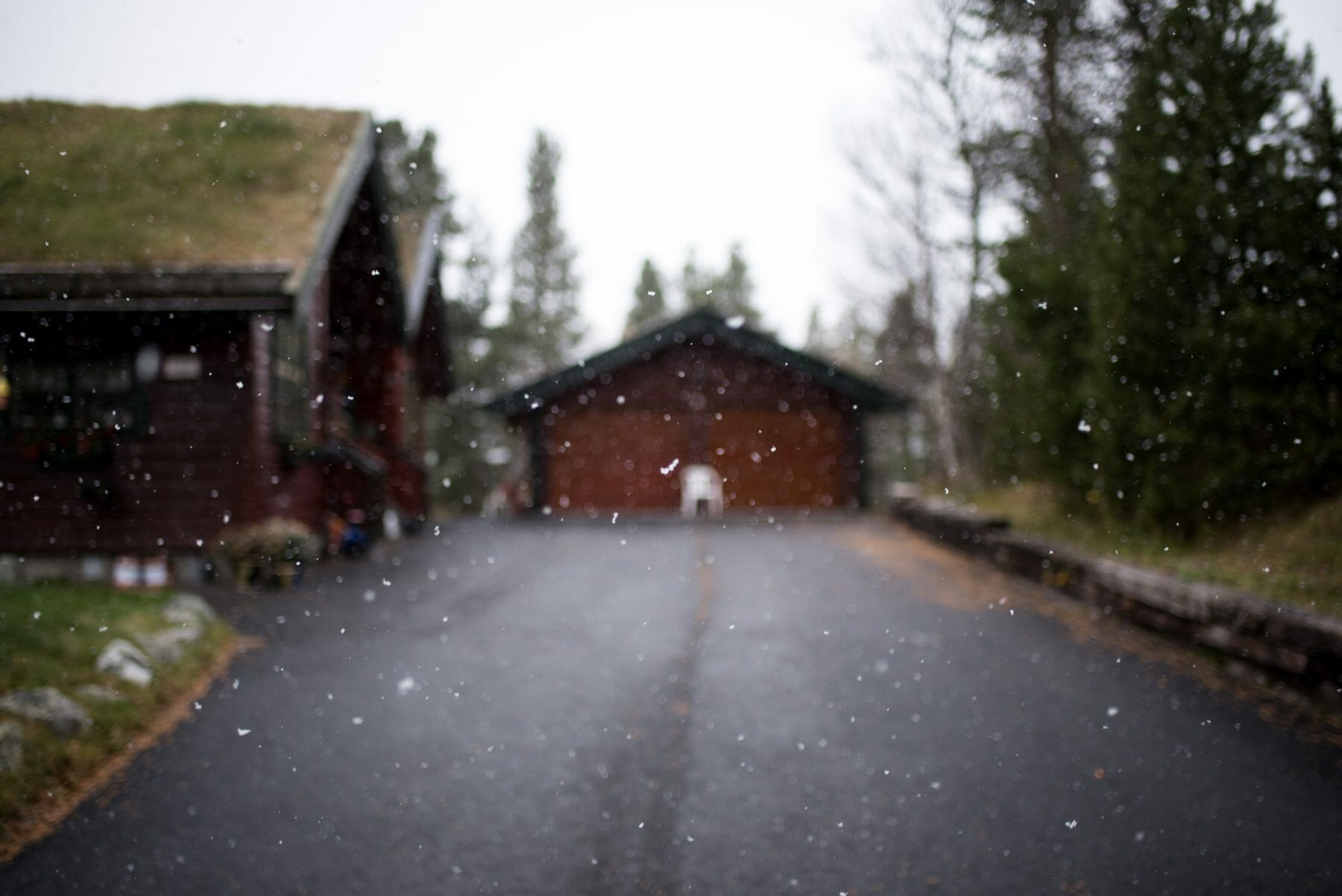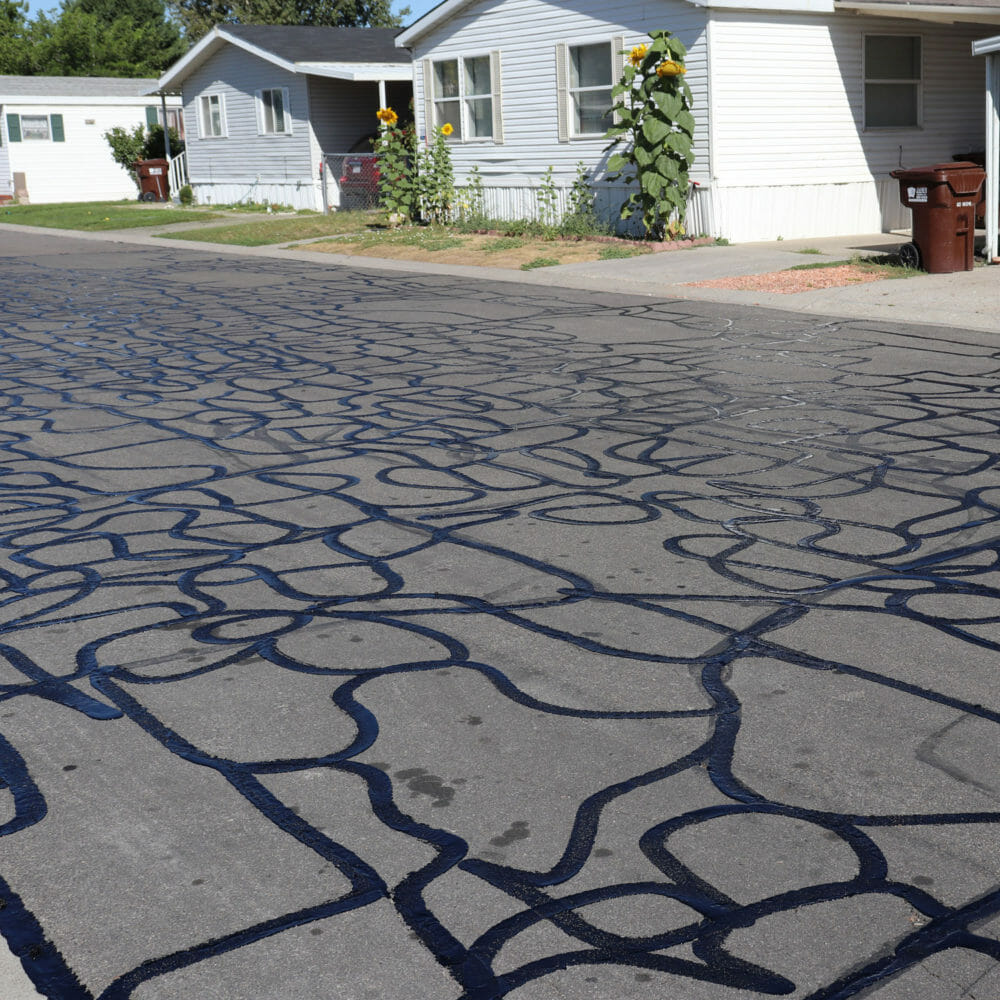As a leader in Utah concrete paving and asphalt maintenance, we see the damage snow and ice can wreak on concrete surfaces and asphalt pavement. With Utah’s extreme temperature fluctuations, we get a freezing and thawing cycle that can crack and break asphalt.
You can help protect your asphalt surface from freezing weather by removing snow and ice from your pavement and ensuring it stays sealed.
That’s why everyone in Utah with a concrete driveway or asphalt parking lot should know how to melt ice on pavement and get asphalt pavement maintenance regularly.
Morgan Pavement offers asphalt paving and a variety of asphalt maintenance services to help you keep your pavement safe and smooth. We put together some information on how to melt ice on pavement and why regular pavement maintenance can prevent ice from damaging concrete and asphalt.

Why Winter Weather Can Damage Your Paved Surface
Along with being a slipping hazard, ice on a concrete driveway can severely damage the pavement. Many of our Utah concrete paving calls are to repair or replace driveways destroyed by winter weather.
How the ice and pavement react to winter weather fluctuations causes cracks and breaks in concrete and asphalt. After one of Utah’s snowstorms, people are often left with ice on a concrete driveway and sidewalk. During the day, the ice can slowly melt—leaving standing water on the concrete. The water from the melted ice can seep into cracks in the pavement, even the ones too small for you to notice. Then, at night, the water freezes again. Water expands as it freezes. The forming ice pushes the cracks apart as it freezes solid.
Not only does the freezing weather damage pavement, but it also leaves damaged areas even more vulnerable to future damage. Every day of the winter, mother nature slowly chews up your pavement.
To protect your pavement from the winter weather, melt ice and snow off your driveway as soon as possible. That way, the warmth of the following day will dry up the remaining water on your pavement instead of melting more water onto it. Also, regular concrete and asphalt pavement maintenance can repair damaged areas and keep a weather-resistant sealcoat on your pavement to help prevent further weathering.
Let’s look at the best way to melt ice on concrete and asphalt.
How to Melt Ice on Concrete and Asphalt
You have a lot of options for how to melt ice on concrete and asphalt. You can choose from various ice melt products, but some are better for concrete than others. You can always use plain old rock salt, but it can corrode your concrete over time.
For concrete, we recommend a calcium chloride-based ice melter. They work quickly at temperatures as low as -25 degrees Fahrenheit. We recommend Snow Joe Melt-2-Go Pure Calcium Chloride Pellet Ice Melter. Calcium chloride can cause irritation in some pets. Calcium chloride is safe for concrete, but do not use calcium chloride on asphalt.
For asphalt, go with magnesium chloride. We recommend Harris Kind Melt Pet-Friendly Ice Melt. It works fast down to -13 degrees Fahrenheit and is safe for concrete, plants, and animals.
If you want something that will work for everything, go with Road Runner Ice Melt. It’s a hybrid formula that uses several chlorides working together.
If you’re looking for an ice melter that’s not chlorine based, try a calcium magnesium acetate (CMA), like Snow Joe MELT30EB-BOX Premium Enviro Blend Ice Melter w/ CMA.
Finally, for a DIY alternative to salt, add ¼ cup of rubbing alcohol and six drops of dish soap in 1/2 gallon of warm water. Put it in a spray bottle, and you’ve got a liquid de-icer.


Beware the Freeze/Thaw Cycle
The point of using a snow melt to protect your pavement is to reduce cracking caused by the cycle of ice thawing during the day and then refreezing at night. Read the instructions for your snow melt carefully. Some products may actually increase the freeze/thaw cycling rate if left on too long or applied at too low of a temperature.
Along with using a de-icer, you can reduce slippage and disrupt the cycle by slowing the development of new ice by applying an abrasive, like cat litter or sand.
You can also prevent ice from damaging your concrete or asphalt by keeping up on its seal coating schedule with routine pavement maintenance.
For More Help With Asphalt and Concrete Maintenance, Call the Pros
Get help preventing ice damage to your pavement. Contact the pavement pros at Morgan Pavement. We offer asphalt maintenance and pavement service across Utah.

